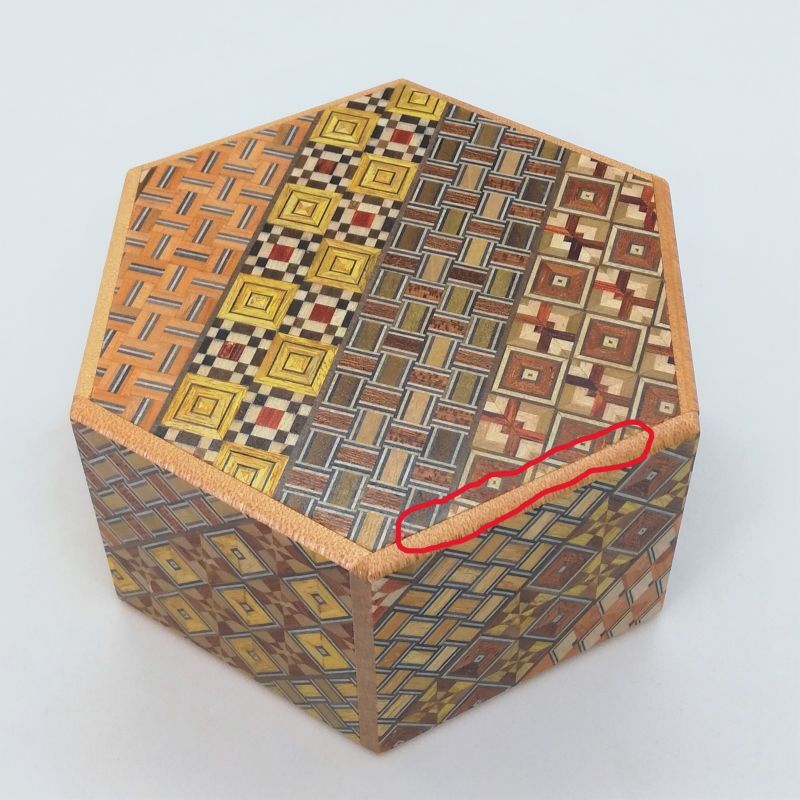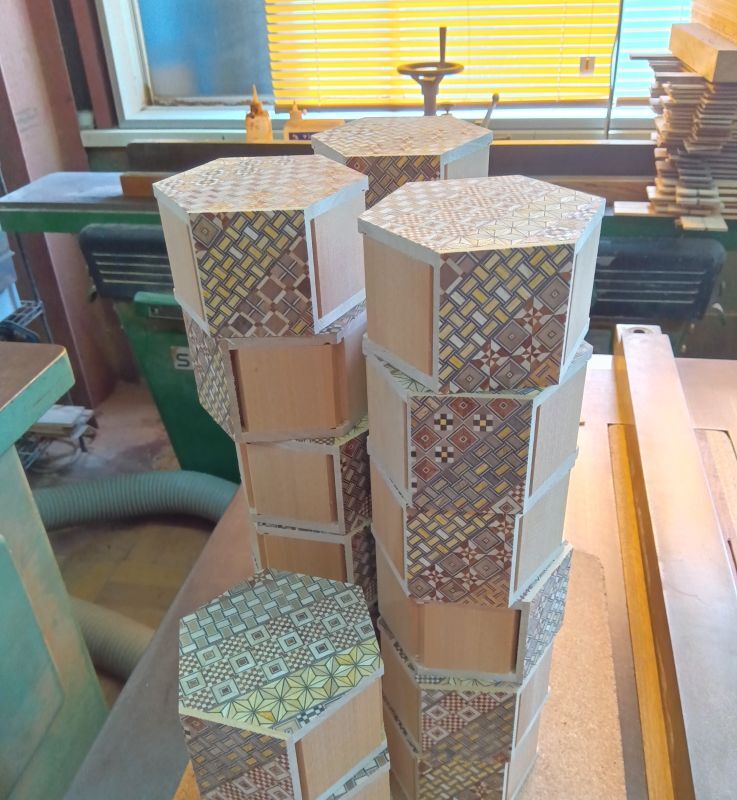Side panels
Today, I am attaching the side panels to the Hexagon 6 steps box. Each box has six side panels. Of these, one panel is fixed, while the remaining five panels are "Aruki" (moving panels), which means they can move. I will first paste the fixed panel, then paste the remaining five panels.
Today, the weather in my workshop area (Odawara City) is sunny with high temperatures and low humidity. It's ideal to attach the side panels on a sunny day like this because the panels dry well. In the process of making a Japanese puzzle box, each part is made of wood, which continuously absorbs and releases moisture. When a wooden board changes its moisture content, it starts to warp (curve). In most cases, the boards will bend towards the side that has lost moisture. So, if I attach a panel that is very damp on a rainy day, the board will warp towards the outside of the box. Over time, "gaps" will appear between the panels and the puzzle box itself (the point in the mark of photo). This is why I do this work on sunny days.
Once the puzzle box is complete, painting (finish coating) it can prevent these moisture problems (though not completely).
Today, the weather in my workshop area (Odawara City) is sunny with high temperatures and low humidity. It's ideal to attach the side panels on a sunny day like this because the panels dry well. In the process of making a Japanese puzzle box, each part is made of wood, which continuously absorbs and releases moisture. When a wooden board changes its moisture content, it starts to warp (curve). In most cases, the boards will bend towards the side that has lost moisture. So, if I attach a panel that is very damp on a rainy day, the board will warp towards the outside of the box. Over time, "gaps" will appear between the panels and the puzzle box itself (the point in the mark of photo). This is why I do this work on sunny days.
Once the puzzle box is complete, painting (finish coating) it can prevent these moisture problems (though not completely).

